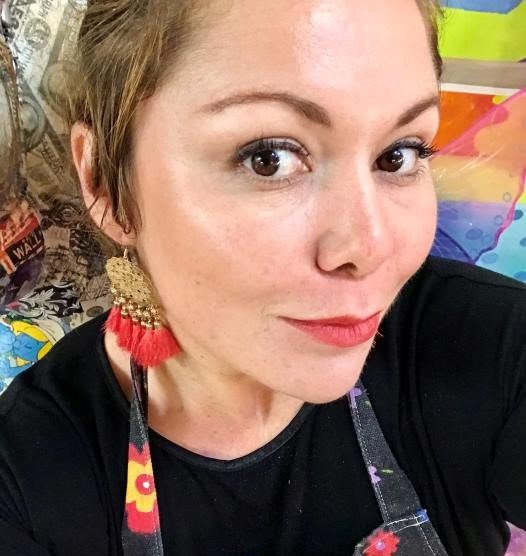Visibility Tuesday - How To Optimize Your Images To Increase Traffic To Your Website
The whole point about having a website is to spread the word about your art and grow your audience, right?
However, the set-up of many artist websites has not much changed over the years.
They are mainly designed for people who already know the artist, understand art and know what are looking for.
So, if you are looking to reach more people you need to shake things up a little.
Share some information about your work, and yourself.
Google will reward you for it and your website visitors will love you for it üòä.
The math is pretty simply:
Higher ranking in Google ‚û© More people on your website ‚û© Greater chances of ultimately advancing in your career with opportunities such as:
⭐ Receiving invitations to participate in shows
⭐ Getting gallery representation
⭐ Making sales
⭐ Getting commissions
⭐ Being featured on blogs or art website
⭐ And a lot more of the cool stuff
So, today’s post is about optimising your images to increase traffic to your website and ultimately grow your audience.
Let's look at what steps you can easily do this week to let your website shine a lot brighter.
Name Your Images Like A Bestseller Novel
Many artists website contain little or no text.
We all know that art is a visual medium, but each image page on your site should include text relating to that art.
Why I hear you ask...
Because search engines can't work with images alone. They need text to understand the context of your website. Unless you give them words, every image on your page is just a useless black hole and Google won’t be able to rank your website.
Therefore, when the images on your website have no text, the main reason for your website - for people to see your art - is lost right from the start.
So, make sure every image on your website includes basic information about that art (titles, sizes, mediums, prize etc) at the bare minimum.
Also include a brief explanation or description, one to two sentences should be plenty.
Naming your images will greatly help your art to appear in search results.
If more of your images show up in image searches the more people will click over to your website.
If you name your images well and include your keywords you can greatly improve your ranking.
And when I say naming your images I'm talking about the following elements:
‚úî The image filename
Let’s explain this with an example:
How I used to save images: “jepg_12459_500X500
How I do it now: colourful-abstract-ink-drawing-on-canvas-by-uk-artist
Name your image files in all small letters with hyphens in between and leave no spaces. Try to mix up your file names with different keywords, to further support your ranking.
‚úî The image captions
A few words describing what's on the image. Again, try to use to a keyword for additional optimization.
‚úî The image title
If your painting is Untitled, use a title such as "Abstract Painting Series 5, Untitled rather than just “Untitled”
A title should describe your art and the page content. Much like a news headline.
The more specific the better. The title is the first thing a user sees in search results, and it's also one of the most important factors that Google uses to determine the topic of a page.
‚úî Image description
Include dimension, material, prize, medium…
‚úî Image explanation
Tell us a little about your work. what would you say to somebody who is not familiar with your work?
2. Smaller Is Better – Compress The Size Of Your Images
Compressing a file is simple, yet plays a crucial part in image optimization as it directly relates to your website’s loading time.
A slow website creates not only a sour taste aftertaste for your visitors it also creates a profound drop in your website’s search engine ranking.
What’s the ideal image file size?
Aim for a size below 70 kb, this should load your images at a good speed without compromising the visual quality.
How can you decrease an image’s file size?
All you need to do is drop your files on a file compression site and you’re all set.
These are some good, free image file compression online such as:
– Does up to 20 images at a time
– Only does 1 file at a time
–Only does 1 file at a time
– Only does 1 file at a time.
Implement these strategies, and you will help search engines correctly index your images so that they are served up for highly-qualified searches.
I encourage you to implement these strategies. It will help search engines index your images so that they show up in searches. More visibility in Google searches will lead to more website traffic and ultimately more interest in your work.











